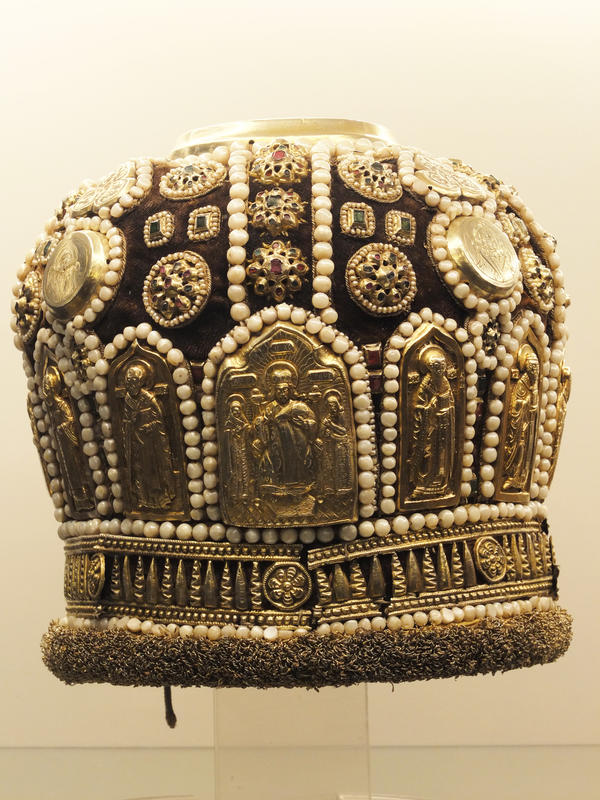The mitre is a sphere-shaped piece of special liturgical headwear. It is usually richly decorated with goldwork, pearls, beads or precious stones. In Old Greek, the word “mitre” meant “a band”, “a headdress”. Worn at a church service, it personifies Christ the King and simultaneously reminds of the crown of thorns placed on His head for humiliation. Traditionally, mitres have four small icons in the center and on the sides: the image of Christ, the Theotokos, John the Baptist, the Forerunner of Jesus, as well as the image of a saint or a major Christian feast. The top of a mitre is decorated with a small icon of the Holy Trinity, an image of the Seraphim, the Angelic Rank closest to God, or a miniature cross.
Saint Macarius, a priest-monk from the Vyzhilov family of merchants was the first clergyman to wear a mitre in the Uglich lands. In 1691, Patriarch Adrian granted him the right to wear a “silver-plated and gilded hat”. This happened after the office of archimandrite had been set up in the Protection of the Theotokos Monastery. The monastery was recognized as one of the largest and its father superior was granted the title of Archimandrite.
Saint Macarius, a priest-monk from the Vyzhilov family of merchants was the first clergyman to wear a mitre in the Uglich lands. In 1691, Patriarch Adrian granted him the right to wear a “silver-plated and gilded hat”. This happened after the office of archimandrite had been set up in the Protection of the Theotokos Monastery. The monastery was recognized as one of the largest and its father superior was granted the title of Archimandrite.





